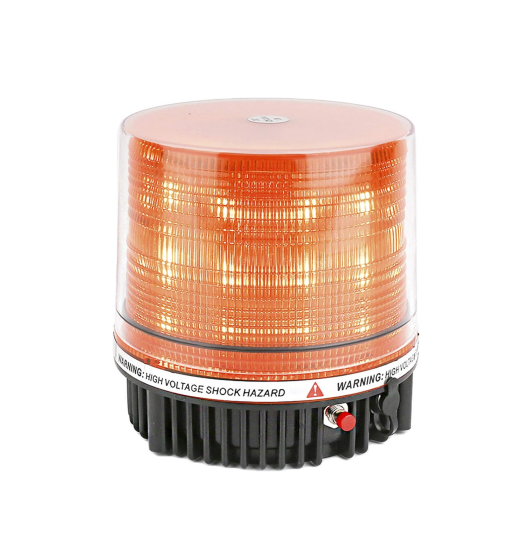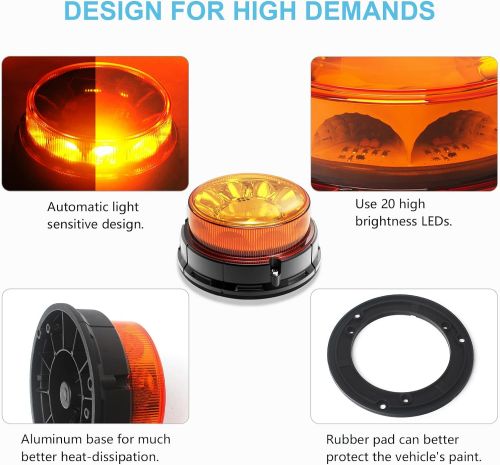Register an account | Forget the password
Become our member and enjoy discounts on purchases in this mall
Emergency vehicle lighting has undergone a remarkable evolution, transitioning from traditional halogen bulbs to cutting-edge LED technology. This shift reflects significant advancements in lighting technology and an increased emphasis on improving safety and visibility for emergency response teams. This article explores the evolution of emergency vehicle lights and their impact on modern emergency services.
Historically, halogen lights were the standard for emergency vehicles, offering bright illumination and visibility. However, halogen technology comes with limitations, such as high power consumption, shorter lifespan, and less durability. As technology advanced, the need for more efficient and reliable lighting solutions became apparent, leading to the widespread adoption of LED (Light Emitting Diode) technology.LED lights have revolutionized emergency vehicle lighting with their superior performance and efficiency. They represent a significant leap forward, addressing many of the shortcomings associated with halogen lights. The transition to LED technology has brought about numerous benefits, enhancing both functionality and safety.


Enhanced Brightness and Visibility: LED lights provide superior brightness compared to halogen bulbs. This increased illumination ensures that emergency vehicles are highly visible from greater distances, significantly improving response times and safety. The intensity and focus of LED lights make them exceptionally effective in both day and night conditions.
Energy Efficiency: LEDs are highly energy-efficient, consuming considerably less power than traditional halogen bulbs. This efficiency not only reduces the load on the vehicle's electrical system but also extends the operational time of emergency vehicles, which is crucial during extended deployments or high-demand scenarios.
Durability and Reliability: LED lights are known for their robustness and resistance to shock and vibration. This durability makes them ideal for the demanding environments encountered by emergency vehicles. Unlike halogen bulbs, which can be prone to breakage, LEDs are designed to withstand rough handling and extreme conditions.
Extended Lifespan: One of the most significant advantages of LED lights is their longevity. LEDs have a much longer operational life compared to halogen bulbs, reducing the frequency of replacements and lowering maintenance costs. This extended lifespan ensures that emergency vehicles remain operational with minimal downtime.
Amber lights serve a critical function in the spectrum of emergency vehicle lighting. They are commonly used for warning and safety purposes, particularly during roadside incidents or construction activities. Amber emergency vehicle lights enhance visibility and alert other road users to potential hazards, contributing to overall safety.

When choosing emergency vehicle lights, consider the following factors to ensure optimal performance:
Brightness: Ensure that the lights offer sufficient brightness for visibility in various conditions, including daylight and low-light environments.
Color and Functionality: Select the appropriate color for the intended application. Red and blue lights are typically used for emergency response, while amber lights are suited for caution and warning.
Mounting and Installation: Ensure that the lights can be securely mounted on the vehicle, and that installation options align with the vehicle's design and operational needs.
Flashing Patterns: Choose lights with customizable flashing patterns to enhance visibility and communication. Advanced LED systems offer a range of patterns and intensities to suit different emergency scenarios.
Flashing lights are a crucial element of emergency vehicle lighting systems. The strobe effect created by flashing lights captures attention and ensures that the vehicle stands out, even in congested traffic or adverse weather conditions. Modern LED systems provide various flashing patterns and adjustable intensities, allowing for tailored solutions to meet specific emergency needs.
The evolution from halogen to LED emergency vehicle lights represents a significant advancement in lighting technology. LED lights offer enhanced brightness, energy efficiency, durability, and longevity, making them the preferred choice for contemporary emergency services. With the added functionality of amber lights and versatile flashing patterns, modern emergency vehicle lighting systems are more effective than ever in ensuring safety and visibility.Understanding these advancements in emergency vehicle lighting will aid in making informed decisions about upgrades or installations, ultimately enhancing safety and operational efficiency for emergency responders and the communities they serve.